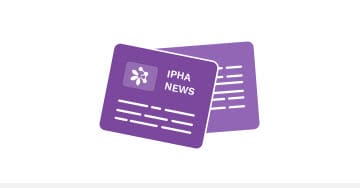IPHA hosts digital engagement seminar as healthcare storytelling evolves


Ever wondered why Facebook is serving you more and more ads for ways to take better care of health or your video feed features patients telling their stories of recovery from serious illnesses?
It’s because all of us are consuming more information digitally, leaving behind more conventional platforms like newspapers. And the people behind the stories are responding to these new trends.
According to the Reuters Institute Digital News Report Ireland 2018, commissioned by the Broadcasting Authority of Ireland, the main sources of news for Irish consumers are television (56%), social media (53%), radio (45%) and online newspapers (44%). Just 35% get their news from printed newspapers.
This shift in content consumption towards digital was the focus of a workshop, ‘Communicating Pharma for the Digital Citizen’, hosted by IPHA as part of their Affiliates Programme. More than 40 people gathered to hear experts explore the trends, themes and best practices in digital storytelling that can get the best out of how we communicate as an industry.
The workshop opened with the IPHA perspective, led by Director of Communications and Advocacy Bernard Mallee. Mr Mallee outlined how IPHA’s communications approach had begun the process of a radical shift in recent months. He dealt with the new impetus behind IPHA’s storytelling, including the treatment of content assets and themes, the ‘Manifesto for Better Health’ and the recent annual conference, ‘Patient Care, Powered By Innovation’. Mr Mallee covered IPHA’s recent impactful patient engagement campaign, #SecondChance, and he outlined how IPHA will engage digitally this year through #InnovateForLife.
Next came Teneo, the CEO advisory agency, whose Director of Social, Seán Earley, made the case for digital communications – how to design, implement and measure high-impact campaigns, best-practice examples of what works in Ireland and globally, and insights into where social is headed in the era of digital disruption.
Facebook’s Kalyn Sheehan provided the social network perspective, explaining how everything is faster now, including transport, attention spans, the processing power of our brains, the way people consume content and connect with businesses.
The pharmaceutical industry perspective was provided by three communications leaders – Natalie Tennyson of Pfizer who overviewed the company’s corporate social media strategy; Andrew Shaw of AbbVie who guided us through a localised version of EFPIA’s #WeWontRest campaign; and Caitríona Hennessy of Roche who described the innovative MS Café activation.
Feedback from the session was very positive, showing that there is huge appetite for insights into how to integrate digital and social in the communications matrix.


